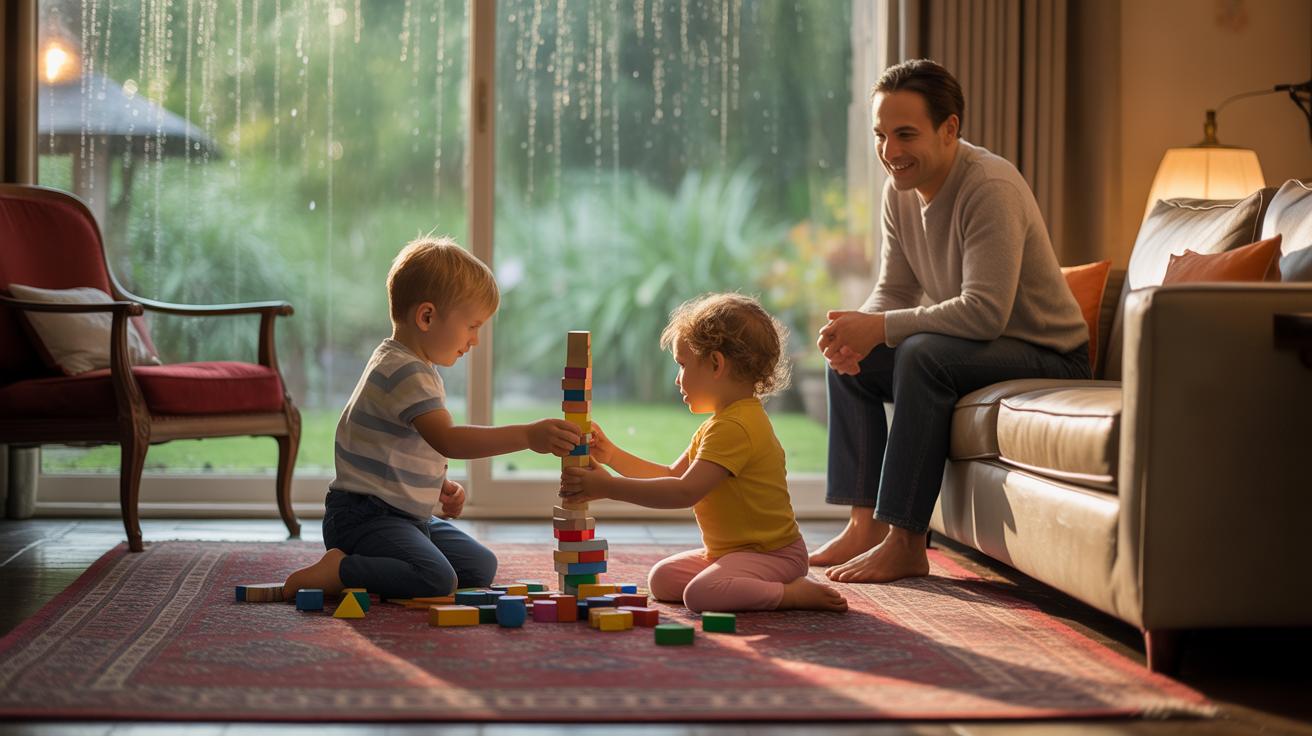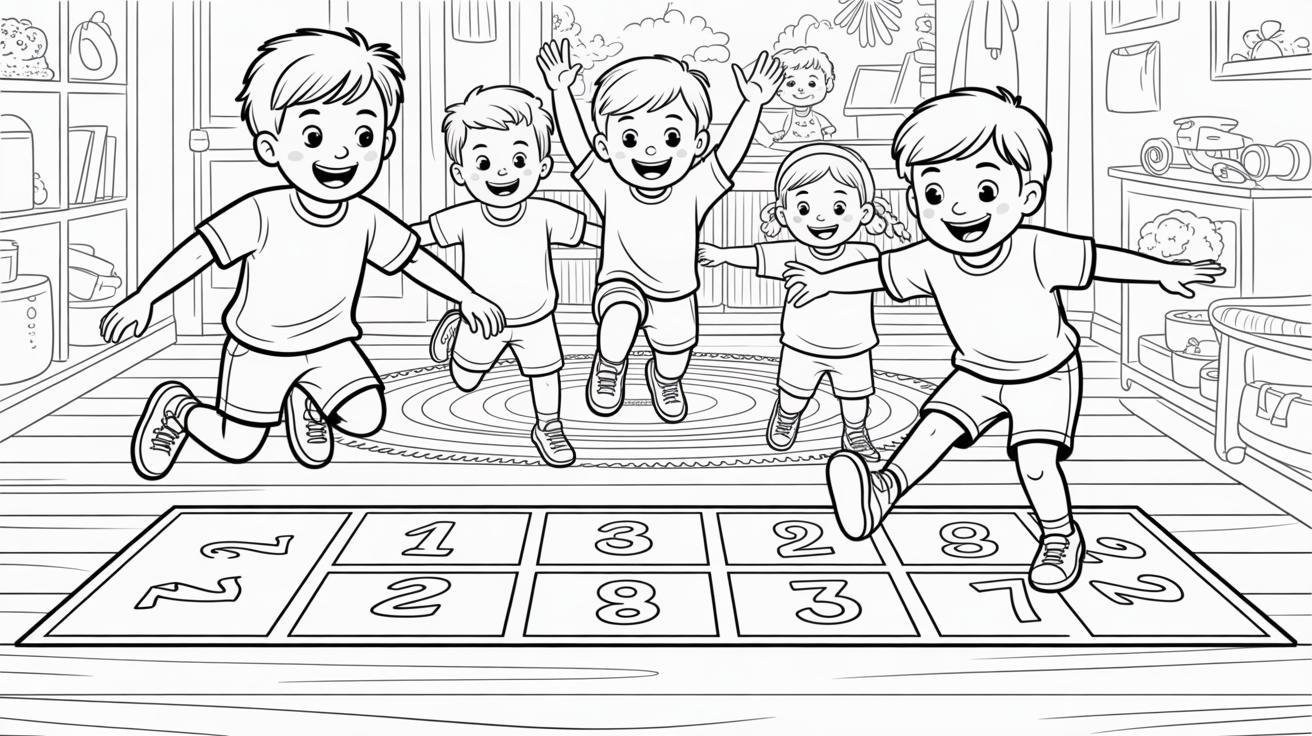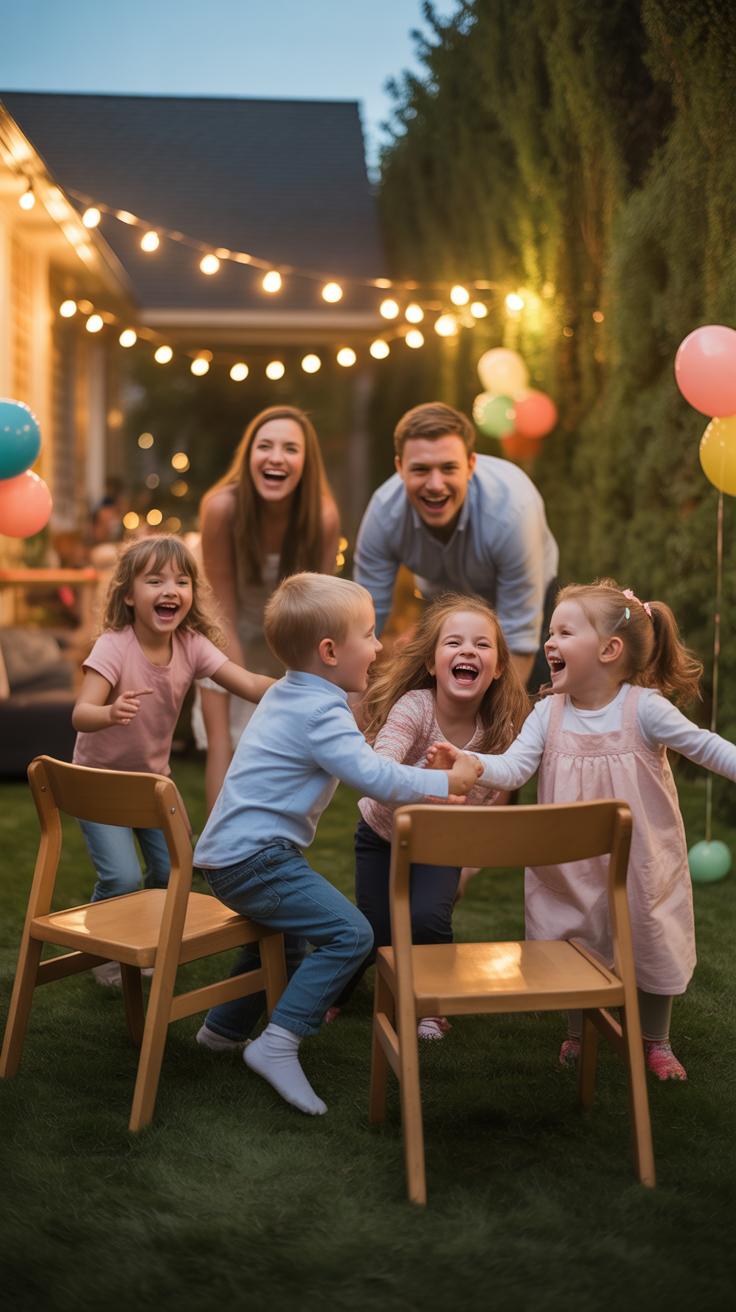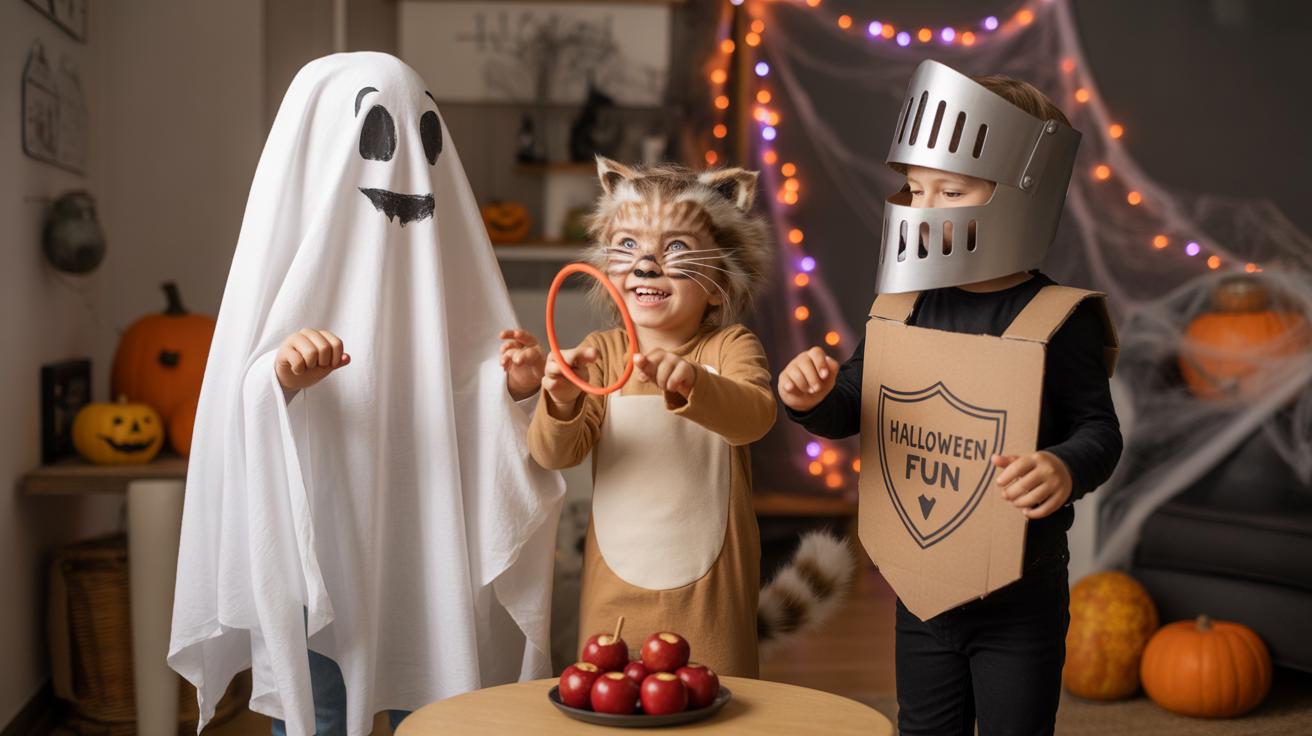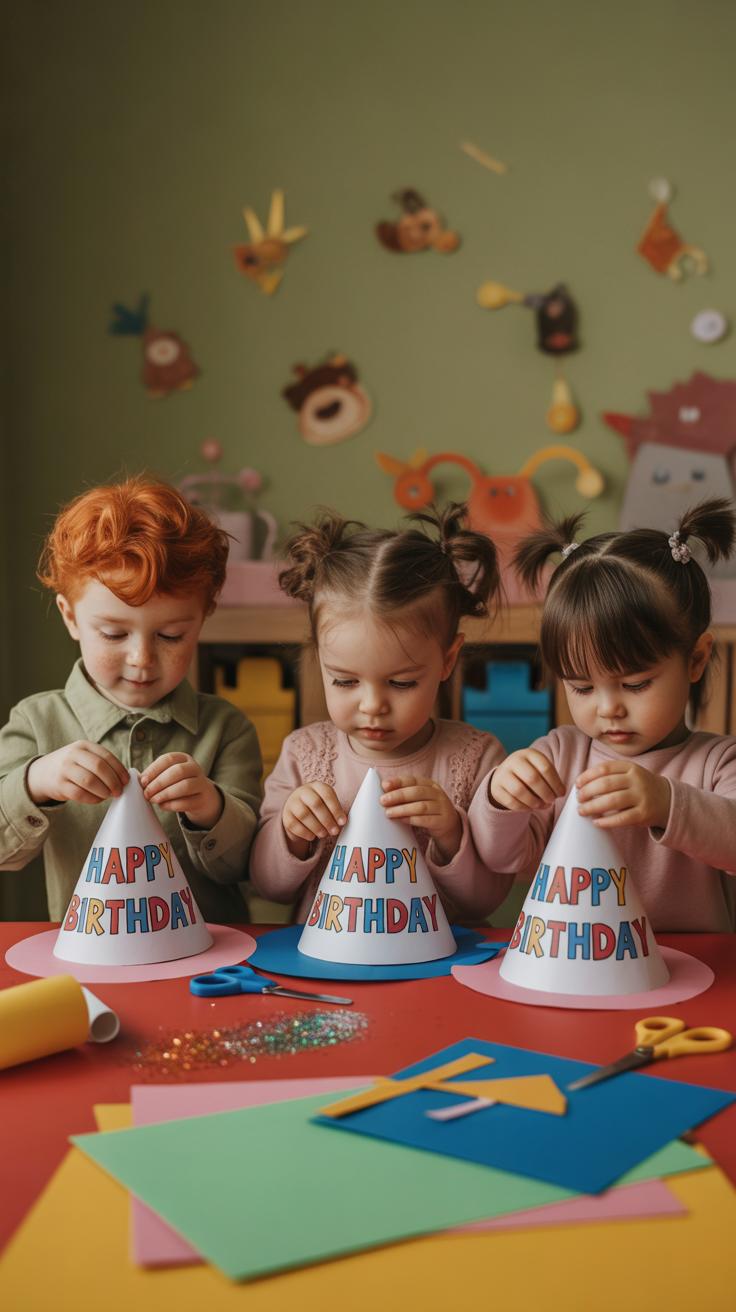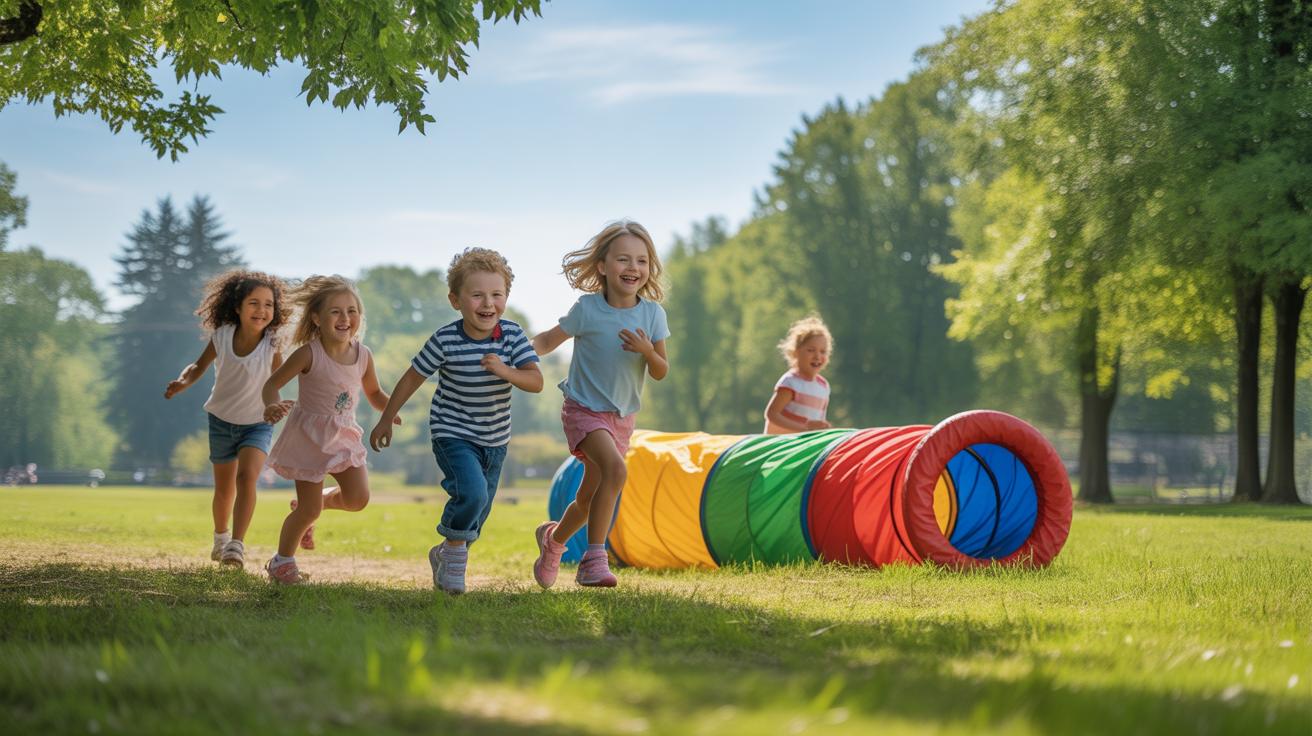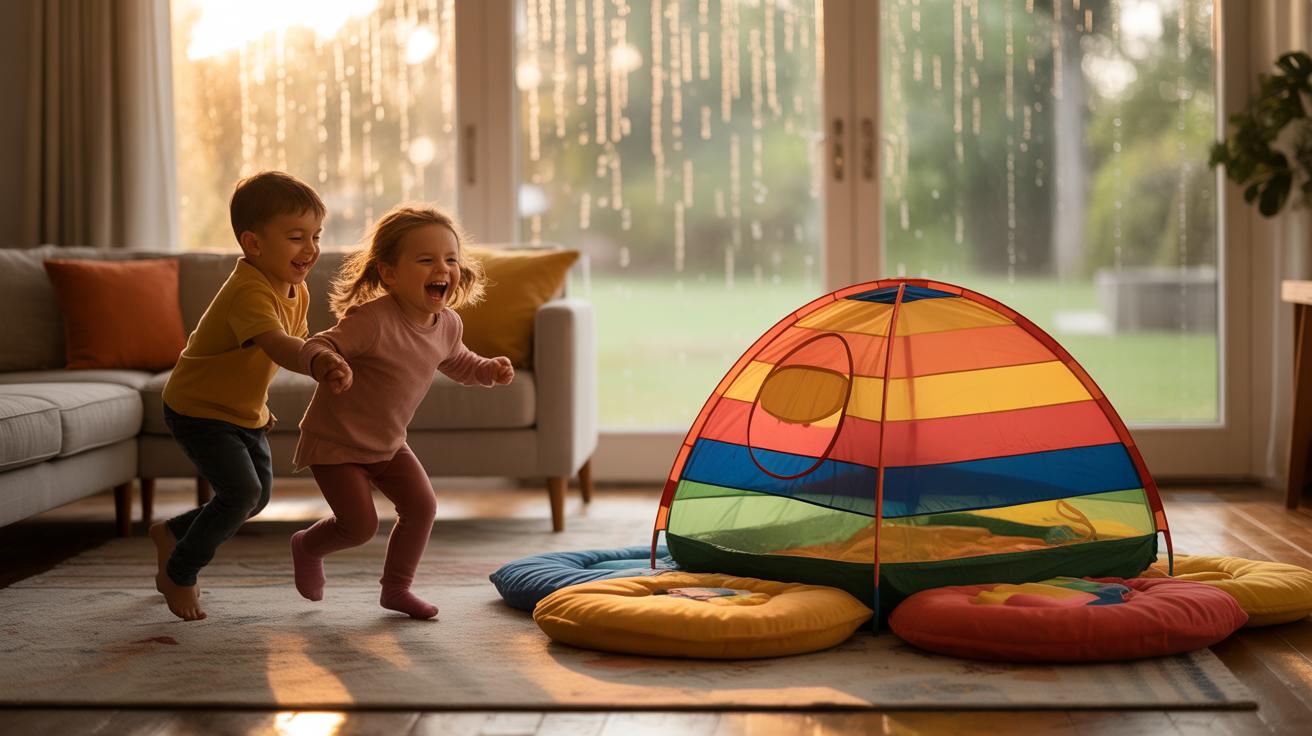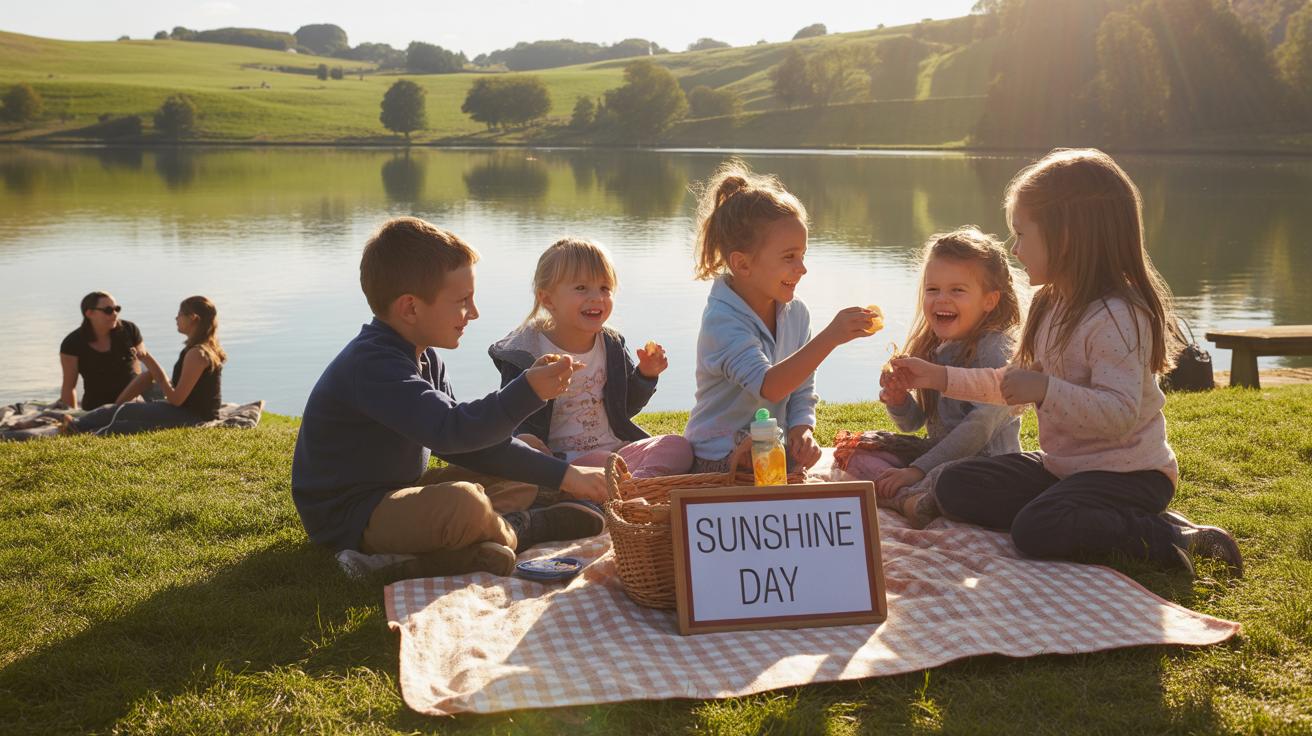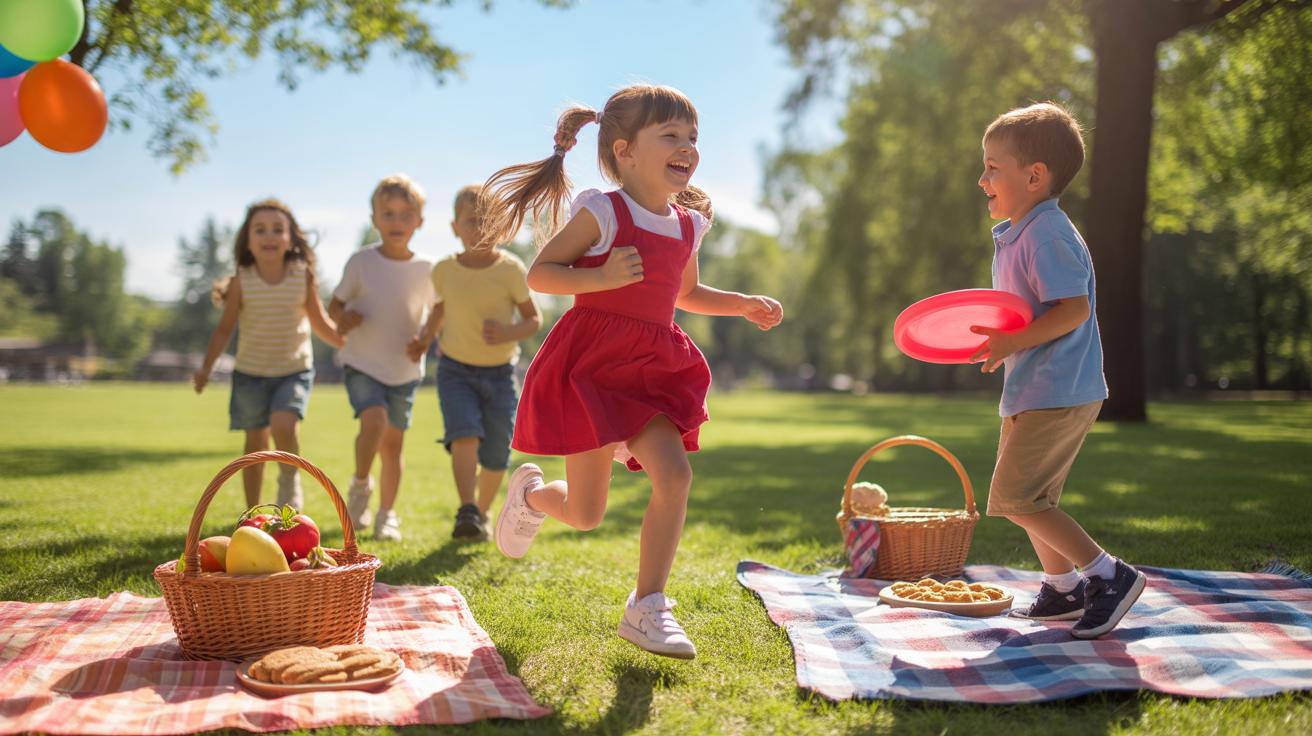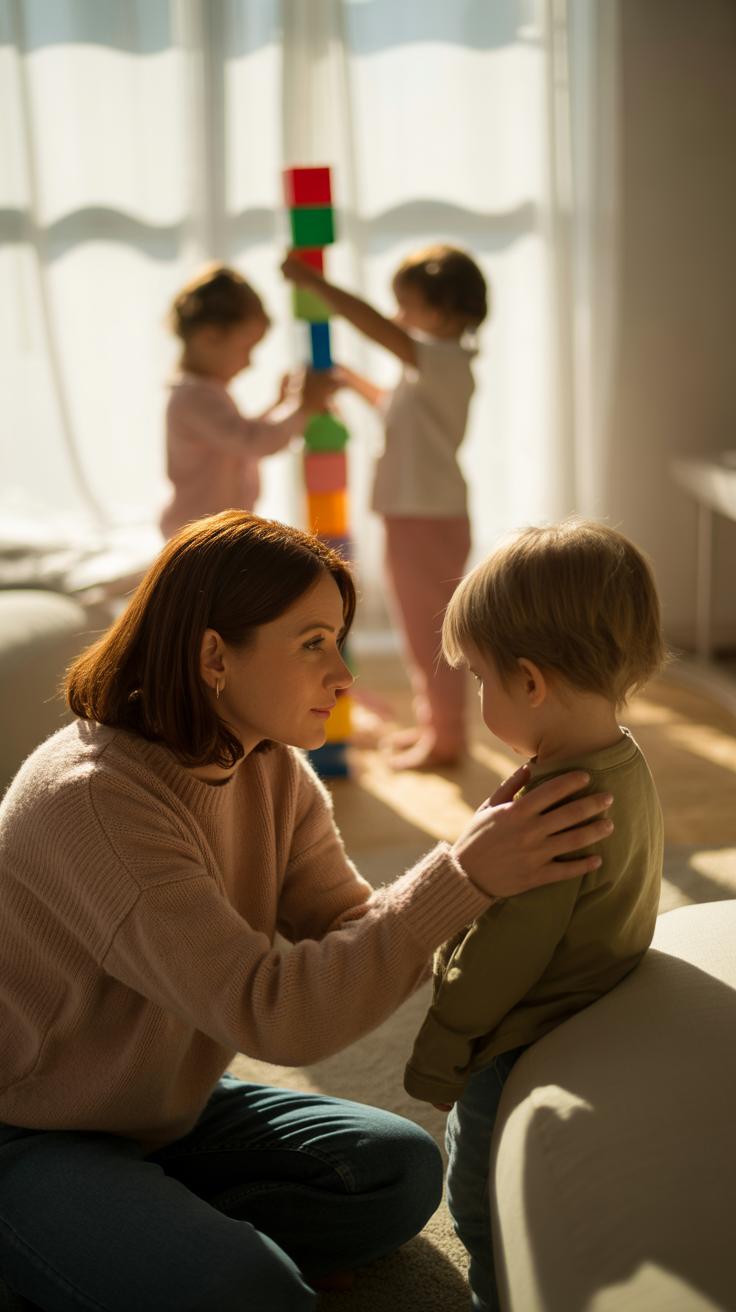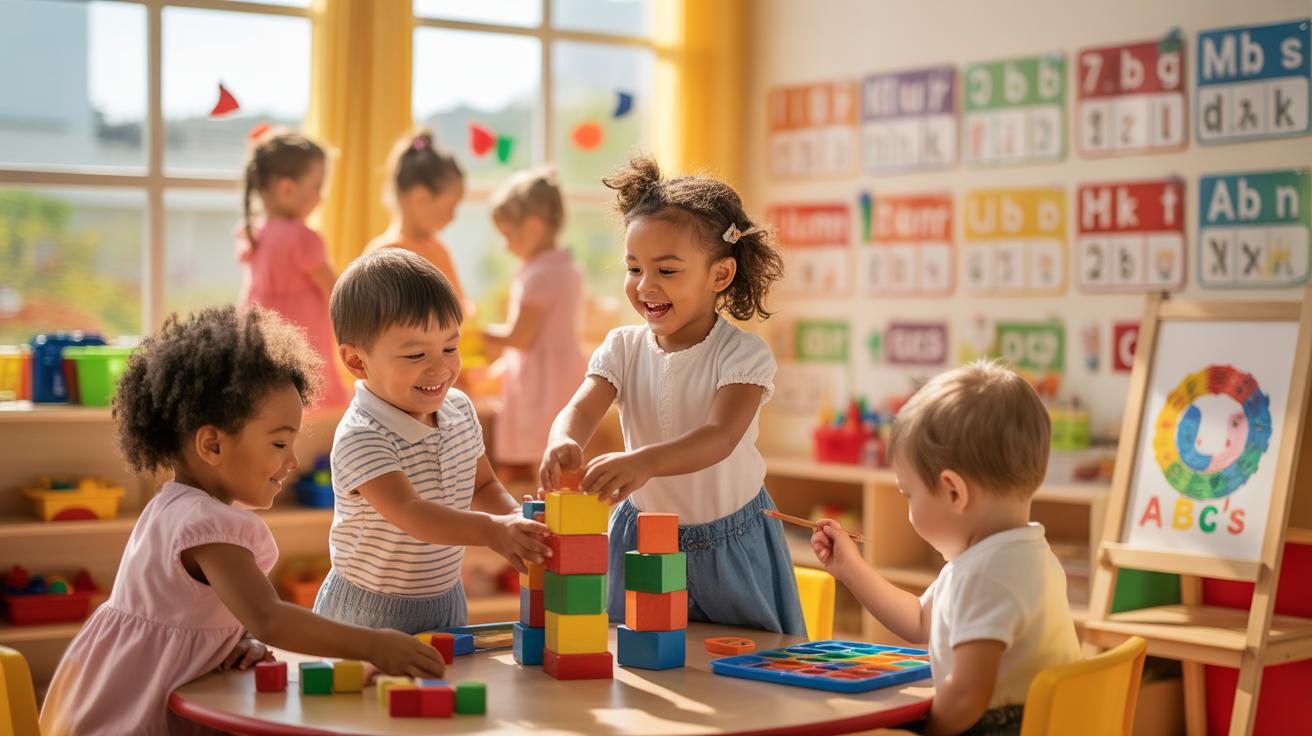Introduction
Kids party games are a great way to bring fun and excitement to any celebration. They help children stay active, interact with each other, and share lots of laughs. When you plan the right games, every child feels included and happy. This article explores different types of kids party games that can keep all your young guests engaged and smiling from start to finish.
Choosing games that are easy to understand and play will make your party run smoothly. We will look at classic games like musical chairs, as well as creative ideas that encourage teamwork and creativity. By the end, you’ll have plenty of options to create a memorable and joyful party experience for the kids.
Planning Games That Fit Your Party Theme
When you’re picking games for a kids’ party, making sure they match the theme can really lift the whole mood. It’s not just about decoration or costumes; the games themselves can bring the theme to life. Imagine a pirate party where kids hunt for treasure, or a superhero party where they complete secret missions. It makes everything feel connected and more fun. But, honestly, it’s easy to get carried away. Sometimes a simple game slightly tailored to fit a theme works better than forcing something complicated.
To choose games that suit your party, think about:
- The kids’ ages — younger ones might need gentler, shorter games, while older kids can handle more physically or mentally challenging ones.
- How much space you have — cramped rooms might call for tabletop or sitting games, while open yards welcome running or team games.
- The number of children — some games work for small groups, others require dozens, or dividing into teams.
Don’t hesitate to tweak traditional games a bit. A slight twist can help them match your theme and still keep all the kids engaged and smiling.
Choosing Games Based on Age Groups
Age really matters when selecting games. Kids at different stages have very different attention spans and abilities. What thrills a five-year-old might bore a ten-year-old—or worse, frustrate them. And sometimes, mixing ages can get tricky. If your party has a range, consider splitting into age-appropriate groups or offering a variety of games side by side.
For younger children, think about simple games—something like “Duck Duck Goose” or a basic treasure hunt. These don’t require complex rules and keep the action moving. Older kids might enjoy problem-solving or relay races that need more cooperation and skill, like “Minute to Win It” challenges or scavenger hunts with clues.
Picking the right age level keeps frustration low and fun high. It’s tempting to pick games that seem cool but end up making some kids feel left out. That’s something worth avoiding.
Matching Games to Party Space
The space you have plays a huge role in which games actually work. Crowded living rooms don’t give much space for wild running or big group activities. Conversely, a backyard often offers plenty of room, but you need to think about terrain and safety.
Indoors, quieter games work better—things like charades, musical chairs, or a craft-based contest. If space is tight, you might consider games that don’t require a lot of movement but keep the kids involved. Outdoors, you can get more physical with sack races, relay games, or bubble chasing.
A quick tip: if the weather’s tricky or the space doesn’t quite match your plans, think about how to adapt. For example, a treasure hunt can be scaled down for indoors by hiding clues around furniture instead of a whole yard. Flexibility here can save the day—and the party.
Classic Kids Party Games That Never Fail
Some party games feel timeless for a reason. Musical chairs, sack races, and pin the tail on the donkey have been around for ages, and they keep kids laughing no matter what. Their charm is in the simplicity — no fancy gear, no complicated instructions, just pure, straightforward fun. You don’t have to worry if every child understands the rules quickly; they usually catch on in seconds.
Take musical chairs. It’s more than just racing to sit down. It builds anticipation, seeing who will be left standing, and the music creates this natural rhythm everyone can follow. Sack races bring out a different kind of energy — hopping towards the finish line, sometimes wobbling, other times bursting into giggles. And pin the tail on the donkey? It’s simple yet thrilling, especially when kids are blindfolded; the room fills with suspense and cheerful teasing.
Musical Chairs Rules and Tips
Setting up musical chairs calls for careful balance. You’ll want enough chairs to keep the game moving but not so few that kids get knocked out too quickly. I find it helpful to start with one fewer chair than the number of players. Then, after each round, remove a chair.
Playing music that’s easy to pause keeps things fair — no one gets an unfair edge. But sometimes my timing slips, and kids catch on, which adds a bit of messy fun. Encouraging players to walk, not run, and not push also helps keep it safe and friendly.
One trick I like: faster music speeds up the pace, slower music calms the chaos. Varying this can mix things up and keep everyone guessing. And if you sense someone feeling left out, consider a quick mini round just for them – it really keeps the mood light.
Sack Race Variations
Classic sack races are great, but they don’t always fit every group perfectly. Mixing things up can make a big difference. Try team relay sack races where kids pass a baton after their hop — it adds a cooperative twist. Or challenge them to hop backward or sideways for a fun spin.
Sometimes, using pillowcases instead of traditional sacks works better for younger kids or smaller spaces. Another idea is to combine a sack race with an obstacle course — like hopping around cones or reaching to grab a flag at the end. That keeps everyone sharp and less likely to get bored.
One time, I saw a party where the sack race turned into a “dress-up relay,” with kids hopping over, then stopping to put on a silly hat before returning. They laughed so much they forgot it was a race at all.
Interactive Group Games to Boost Teamwork
Organizing a Treasure Hunt
Treasure hunts are great for getting kids to work together, but setting one up can feel tricky. Start by choosing a safe, defined area where clues can be hidden without too much hassle. Think about themes that spark curiosity—pirates, detectives, or explorers often do the trick. Then, create simple clues that are just challenging enough so kids don’t lose interest but not so hard they get frustrated. Maybe use rhymes or picture hints for younger kids. You can space the clues to encourage cooperation, so children have to share ideas and help each other solve them. Watching them connect the dots and celebrate together is usually the best part. Sometimes, you might think the clues are too easy or too tough, but adjusting on the fly is part of the fun.
Relay Races for Team Building
Relay races push kids to cheer each other on while depending on one another to succeed. You don’t need fancy setups; simple races involving passing a baton, balancing an egg on a spoon, or hopping in sacks work well. Try mixing things up with fun twists—maybe a relay where teams build a puzzle piece by piece or carry water without spilling. The key is that every member has a role to play. This means even shy kids get drawn in, and no one feels left out. Sometimes kids get overly competitive, which can be a bit tense, but lightly reminding them it’s about teamwork often pulls the group back together. Plus, witnessing their high-fives and laughs makes the race worth it.
Creative Crafts and Games For Quiet Moments
Parties can get pretty hectic, with kids running around and being loud. It’s tempting to think non-stop activity is the way to keep everyone happy, but that’s not always true. Quiet activities like crafts or puzzles offer a needed break from the chaos. They give children a chance to catch their breath and focus on something a bit calmer while still enjoying themselves. Sometimes, those quieter moments can be just as memorable as the loud ones, maybe even more so. Plus, not every child thrives on constant movement—some just need a little downtime without feeling left out.
Simple Craft Projects for Kids
Crafts can be wonderfully absorbing, especially when they tie into the party theme. Here’s a few easy ideas that might work:
- Decorate paper masks matching the party’s characters or animals
- Create friendship bracelets with colorful beads
- Make party hats using construction paper and stickers
- Build simple paper airplanes or boats for a themed race
- Design personalized thank-you cards for guests to take home
These projects don’t need fancy supplies or skills, just a bit of focus and imagination. Kids will often surprise you by how seriously they take these small tasks.
Quiet Puzzle Challenges
Not every quiet moment demands crafts. Some children prefer puzzles, which can be done solo or in pairs without much fuss. Simple jigsaw puzzles related to the party’s theme or small brain teasers work well. You might also try matching card games or word searches for older kids. Puzzles give kids a chance to rest while still feeling engaged and providing a subtle challenge. It’s interesting to watch how these calm activities sometimes draw out a different kind of social interaction—not noisy, but collaborative in its own way.
Do you notice some kids gravitate toward these quieter options? It might just be worth having them on hand to keep everyone comfortable and included, even when things get wild around them.
Games That Encourage Movement and Energy Burn
Kids have a lot of energy, and parties are the perfect chance for them to move around and let that energy out. Active games like balloon stomp and dance-offs do more than just tire them out—they help kids stay engaged and enjoy themselves without getting restless or bored too quickly. These games can channel wild excitement into something playful, which is really good, if a bit noisy.
Balloon Stomp Setup and Rules
Setting up balloon stomp is pretty straightforward but does need some thought to make sure every kid can join in safely. Tie one balloon to each child’s ankle with a string. The aim? Stomp on others’ balloons while protecting your own. The last balloon untouched wins, or you can just keep playing for fun. To adjust difficulty, try:
- Using different balloon sizes or tying balloons higher or lower depending on age.
- Limiting the playing area—smaller for younger kids, bigger for older.
- Allowing teamwork or paired play to ease competition stress.
It’s a simple setup but prone to bursts of laughter, squeals, and sometimes confusion about who’s out. But maybe that unpredictability is part of the charm.
Dance Off Competitions
Dance-offs are always crowd-pleasers, and they work well to keep everyone moving without pressure. To organize one, create a playlist from upbeat kid-friendly songs, and let kids show off their moves, one by one or in small groups. Judging doesn’t have to be formal—consider applause from other kids or simple categories like “silliest move” or “funniest face” to keep it light.
This way, even shy kids can join in without feeling judged too harshly. Plus, having a few adults team up as cheerleaders keeps the energy going. The best part? It’s less about winning and more about having fun and moving around, which is sometimes exactly what a lively party needs.
Games To Spark Creativity and Imagination
Storytelling Games for Kids
One great way to get children’s minds working is through storytelling circles. You gather the kids in a circle and start a story with just a sentence or two. Then, each child adds a bit more—building the tale together. This kind of game gently pushes them to think creatively and listen closely, because they’ve got to stay on track with what others said. Sometimes stories go in unexpected directions, usually making everyone laugh or scratch their heads.
Try suggesting simple themes or settings, but leave plenty unsaid so the kids fill in the blanks themselves. It’s not about perfect storytelling; it’s about the back-and-forth flow. You might notice shy kids find their voice, while others surprise with imaginative twists. It’s a subtle way to spark creative thinking—while, yes, also practicing patience and attention.
Dress-Up and Role-Playing
Dress-up games offer more than just costumes and fun. They open the door to role-playing, where kids step into different characters’ shoes. Perhaps a pirate, a doctor, or even a news reporter—each role invites them to explore perspectives and scenarios they don’t encounter daily. This can be playful, but it’s also educational in a quiet way.
By acting out roles, children practice empathy, verbal skills, and decision-making. You might see a child who usually quietly observes throw themselves into a bold character. Sometimes, they invent stories around their costumes, blending imagination with real-world ideas. Role-playing can be a bit chaotic but in a good way—it fuels confidence and social skills, which are just as important as the fun.
Using Technology Safely At Party Games
Dance Video Games for Kids
Introducing dance video games like Just Dance can be a great way to get kids moving indoors, especially when outdoor space is limited or the weather isn’t cooperating. These games combine music with movement, which helps burn off energy and keeps the mood lively. I remember one party where kids couldn’t stop laughing as they tried to copy the quirky dance moves—it became a highlight. It’s simple to set up, just a screen and a motion sensor, and kids take turns showing off their skills. But it’s not just about competition; these games encourage kids of all skill levels to join, making it quite inclusive.
Balancing Screen Time with Other Activities
Still, too much screen time can strain little eyes and sometimes make kids restless. To keep the party balanced, alternate tech games with more hands-on activities or classic physical play. You might try a few dance rounds followed by a group game like musical chairs or a quick outdoor tag session. Setting clear time limits—for example, 15 minutes per tech activity—helps so kids don’t get glued to the screen. At times, some kids might want to keep playing while others have had enough, so mixing things up lets everyone stay involved. It’s a bit of a juggling act, balancing fun and healthy habits, but with some attention, it’s certainly manageable.
Prizes and Rewards That Motivate Participation
Small prizes can do more than just reward winning; they spark a sense of excitement and encourage kids to join in without hesitation. It’s interesting how a simple sticker or a colorful pencil can make shy children feel seen and eager to try. Sometimes, it’s not even about the prize but the idea of being recognized that matters most.
When picking prizes, think about things that most kids enjoy but don’t feel too competitive. Cheap toys like mini puzzles, bright erasers, or bubbles work well. You might also consider useful items like fun notebooks or crayons that keep kids engaged even after the party. The goal is to avoid prizes that highlight only those who win and instead celebrate participation.
Words matter too. Praise doesn’t cost a thing, but it can hugely motivate. Saying things like “I love how you didn’t give up!” or “You were so creative!” feels more powerful than a prize, sometimes. Kids respond well to encouragement — it builds their confidence, making the games enjoyable no matter the outcome. Plus, it teaches them that trying is as valuable as winning.
Handling Challenges During Kids Party Games
Resolving Conflicts Quickly
Disagreements among kids during games can pop up out of nowhere. Maybe two kids claim they won, or someone feels left out. When this happens, stepping in calmly is key. Try to listen to both sides without picking favorites. You can say something like, “Let’s figure this out together,” to show you’re there to help, not judge.
Sometimes, it’s best to pause the game and remind everyone about fairness and having fun. If needed, offer a simple, quick decision—like replaying a round or creating a mini challenge that lets everyone win something. It might feel a bit awkward at first, but kids usually respond well to clear, gentle guidance. Remember, diffusing tension early keeps things moving smoothly.
Keeping Kids Interested Throughout
Kids can lose interest quickly, especially if games drag or get repetitive. Mixing things up mid-party really helps. Switch from active games to quieter ones or throw in a surprise round to keep excitement alive. Also, watch for signs a child is bored or frustrated, and invite them to try a different role, like scorekeeper or helper, so they stay involved without pressure.
Short bursts of play, with breaks or snacks in between, work well to reset energy. And don’t hesitate to involve the kids in choosing what comes next—it gives them a sense of control and can spark new enthusiasm. You might think all kids enjoy the same kind of games, but often, it’s those small changes and attention to mood that keep everyone smiling and engaged till the end.
Final Tips For Hosting A Fun Kids Party
Planning your party in advance takes a lot of the pressure off. When you gather all the game materials beforehand and map out the rules, you free yourself up to enjoy the moment instead of scrambling last minute. For example, having everything ready to go means no awkward pauses while you figure out what’s next. It’s surprising how small details like extra game supplies or simple visual cues can keep things running smoothly.
Still, even the best plans often need tweaking—kids can be unpredictable. Sometimes, a game might feel blah or a rule might confuse the little ones. Being willing to switch gears—maybe shorten a game or bend the rules a bit—can save the day. You might find that what seemed like a great idea on paper doesn’t fit the energy in the room after all.
Keep your attitude light and flexible. If you catch yourself stressing, remember this: the kids feed off your vibe. A relaxed host who laughs things off usually keeps everyone smiling. What’s more, flexibility doesn’t mean losing control—it’s about tuning into the kids’ moods and needs as they change.
Ultimately, a bit of prep, some adaptability, and a positive mindset create the right recipe. You might not get everything perfect, but that’s okay. After all, isn’t the point for everyone to have fun, with a few laughs along the way?
Conclusions
Games at kids’ parties are not just fun; they build friendships and create lasting memories. By picking activities that mix movement, laughter, and teamwork, you ensure that every child feels happy and included. Simple rules and clear instructions help the games flow and keep the energy positive.
Try combining easy classics with new games to keep children curious and excited. Watching kids smile and play together is the best reward. Your efforts in organizing thoughtful games will make your party a hit, leaving all guests wanting to come back for more celebrations.


